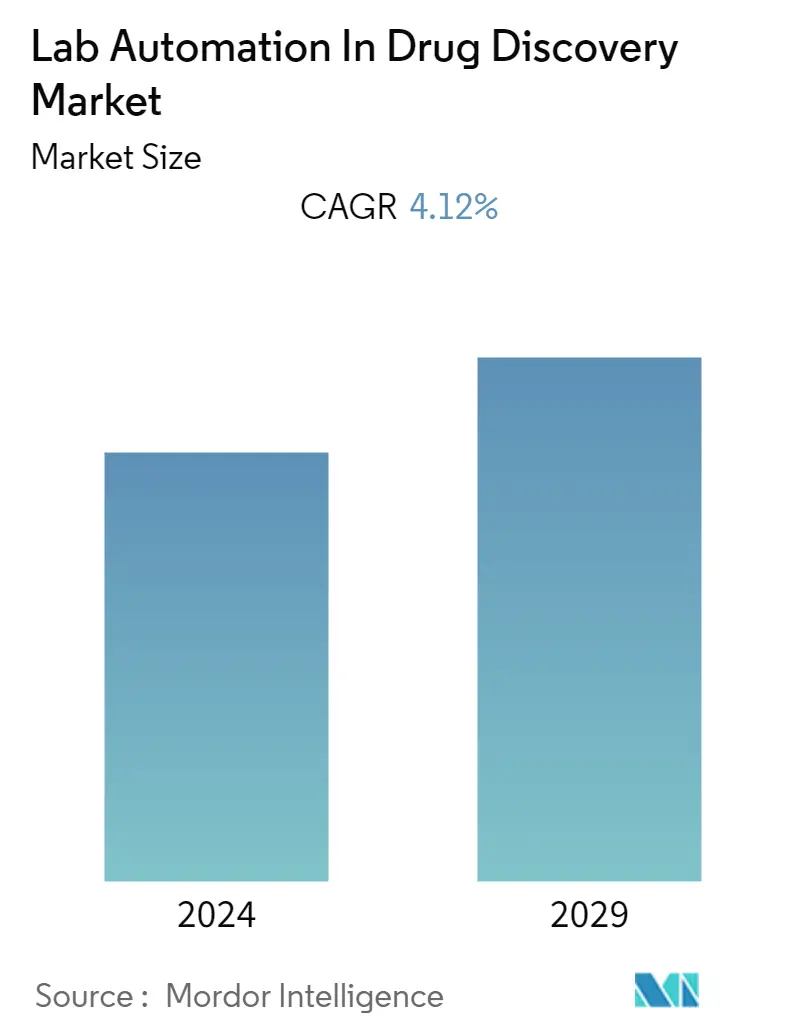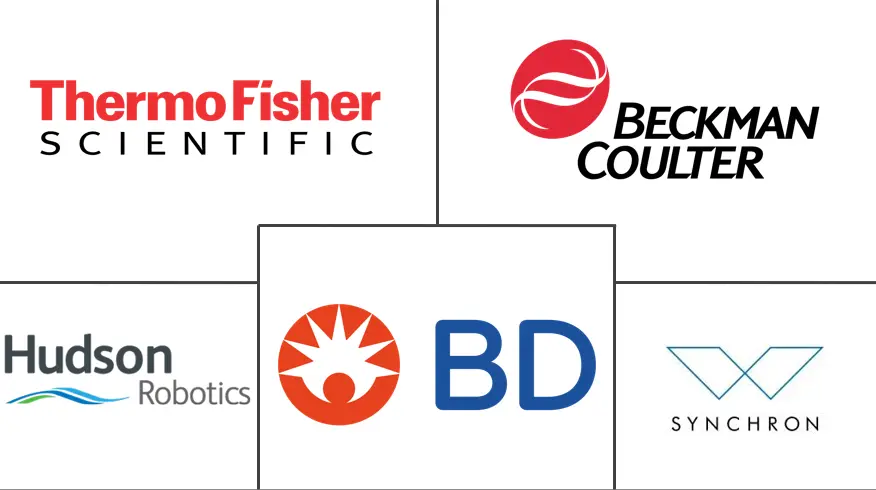Market Size of Lab Automation In Drug Discovery Industry

| Study Period | 2019 - 2029 |
| Base Year For Estimation | 2023 |
| CAGR | 4.12 % |
| Fastest Growing Market | Asia-Pacific |
| Largest Market | North America |
| Market Concentration | Medium |
Major Players
*Disclaimer: Major Players sorted in no particular order |
Need a report that reflects how COVID-19 has impacted this market and its growth?
Lab Automation In Drug Discovery Market Analysis
Lab automation in the drug discovery market was valued at USD 5.55 billion in the previous year and is expected to reach USD 7.28 billion while registering a CAGR of 4.12 percent during the forecast period. Drug discovery organizations have been investing massive amounts in R&D activities to develop new technologies that are expected to enhance their products. These companies invest in proteomics, drug testing, high-throughput screening, and combinational chemistry to develop an environment-friendly biotechnology reagent. Hence, such developments are expected to contribute to the growth of the market over the forecast period.
- Laboratory automation transformed drug discovery over the years, primarily through two major influential factors: error reduction and cost-benefit. Additionally, automation transformed the traditional drug discovery process by making it feasible to identify many targets through the biotechnology revolution and numerous combinatorial technologies, which fueled compound collection. Additionally, drug research companies require complete solutions, dedicated customer care, and realizing their value for huge investments. Furthermore, research laboratories expect maximum software flexibility so they can configure it themselves.
- The United States has been a pioneer in clinical research for years. This country is a hub for some prominent pharmaceutical companies, like Pfizer, Novartis, J&J, GlaxoSmithKline, and Novartis. The country also possesses the highest contract research organizations (CROs) concentration. Some of the significant CROs in the country are IQVIA, Laboratory Corp. of America Holdings, Syneos Health, and Parexel International Corp. Due to the presence of such prominent players in the industry and stringent FDA regulations, the studied market is very competitive in the country. Companies in the country are adopting robotics and automation in labs to gain an advantage over competitors.
- Furthermore, the journey in drug discovery laboratories has inclined to focus on speed and accuracy. Therefore, automation of biological assays is becoming the primary factor for HTS as the labs are mainly required to screen a large number of compounds, approximately 1-3 million.
- However, one of the significant challenges that act as a hurdle in the uptake of automation in pharmaceuticals has been the interdisciplinary nature of the problem. For instance, expertise in traditional chemometrics analysis is needed, as well as advanced instrumentation, potentially new sampling or robotics methods, and knowledge of the most recent developments in machine learning (ML) and artificial intelligence (AI) approaches. In addition to this, the use of automation in laboratories can result in issues with compliance and regulations as automation can introduce errors or incorrect data into the lab environment, further increasing the probability of potential for incorrect results or non-compliance with regulations.
- On the contrary, the pandemic positively impacted the need for lab automation in drug discovery laboratories. The spread of COVID-19 and SARS-COV-2 increased the pressure on drug manufacturers to develop vaccines to combat the spread of the virus across the world. Therefore, the production contracted with major COVID-19 vaccine players increased for players, including Moderna, Johnson & Johnson, & AstraZeneca, and Catalent. Thus driving the demand for lab automation across vaccine drug manufacturers.
